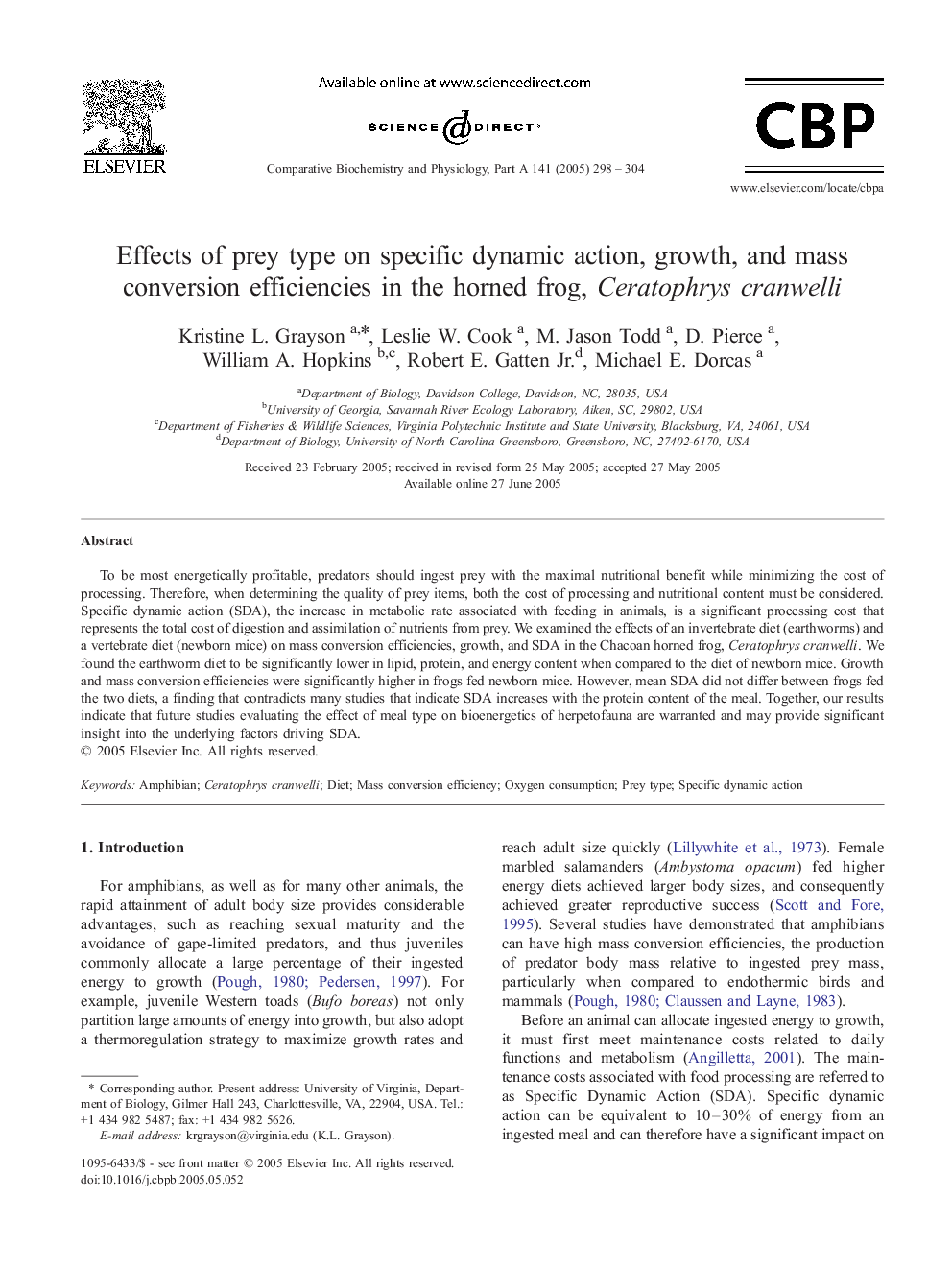| Article ID | Journal | Published Year | Pages | File Type |
|---|---|---|---|---|
| 10819151 | Comparative Biochemistry and Physiology Part A: Molecular & Integrative Physiology | 2005 | 7 Pages |
Abstract
To be most energetically profitable, predators should ingest prey with the maximal nutritional benefit while minimizing the cost of processing. Therefore, when determining the quality of prey items, both the cost of processing and nutritional content must be considered. Specific dynamic action (SDA), the increase in metabolic rate associated with feeding in animals, is a significant processing cost that represents the total cost of digestion and assimilation of nutrients from prey. We examined the effects of an invertebrate diet (earthworms) and a vertebrate diet (newborn mice) on mass conversion efficiencies, growth, and SDA in the Chacoan horned frog, Ceratophrys cranwelli. We found the earthworm diet to be significantly lower in lipid, protein, and energy content when compared to the diet of newborn mice. Growth and mass conversion efficiencies were significantly higher in frogs fed newborn mice. However, mean SDA did not differ between frogs fed the two diets, a finding that contradicts many studies that indicate SDA increases with the protein content of the meal. Together, our results indicate that future studies evaluating the effect of meal type on bioenergetics of herpetofauna are warranted and may provide significant insight into the underlying factors driving SDA.
Related Topics
Life Sciences
Biochemistry, Genetics and Molecular Biology
Biochemistry
Authors
Kristine L. Grayson, Leslie W. Cook, M. Jason Todd, D. Pierce, William A. Hopkins, Robert E. Jr., Michael E. Dorcas,
